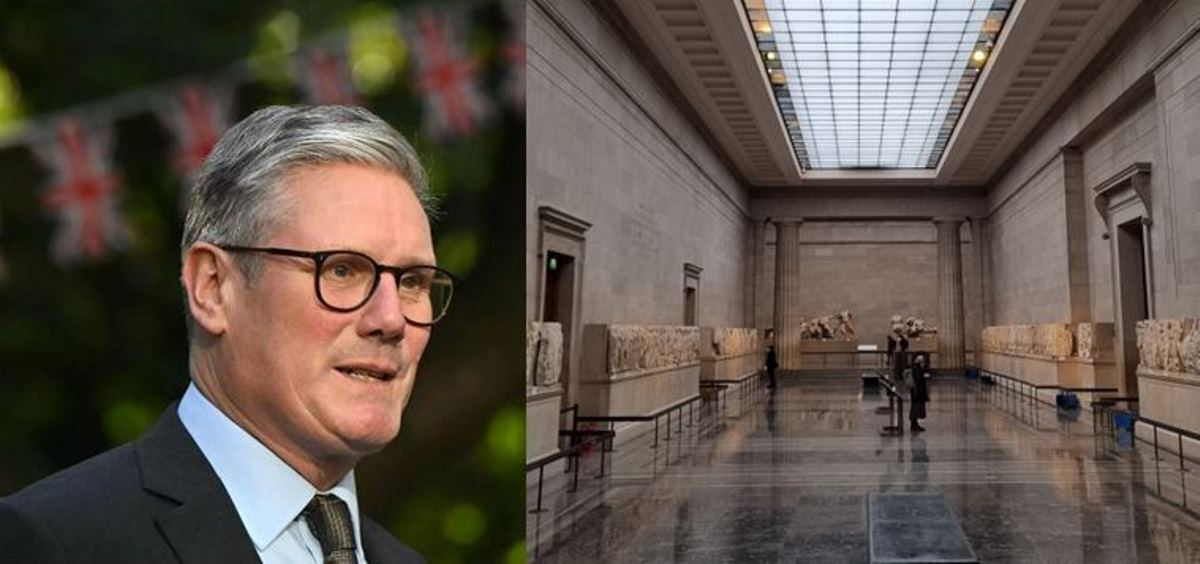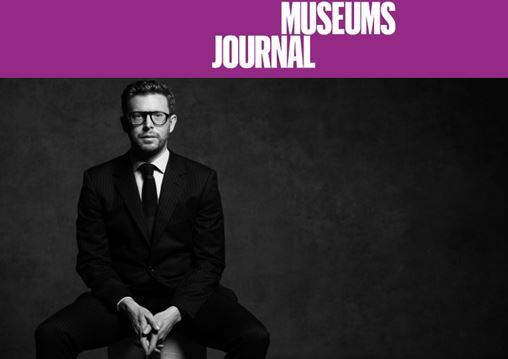Monday December 3, 2007
The Guardian
It was a day unlike any other. Bernard Tschumi arrived at his office in New York's Chelsea Village to receive a phone call. This was the big one. The Swiss-American architect had won the greatest prize in architecture: the international competition to design the New Acropolis Museum in Athens. This was a job, surely, coveted by every A-list architect in the world.
No sooner had Tschumi put down the phone than he was told that a plane had just crashed into the World Trade Centre. "We all watched from our roof as the second aircraft smashed into the other tower," he says. "No one felt like celebrating after that. It wasn't a particularly good start."
Tschumi's new museum - a geometrical marvel dedicated to the celebration of antiquity - was funded by Greece's ministry of culture and the EU. The building is complete, though its display of magnificent Athenian art, some 4,000 ancient artefacts in all, won't be finalised until next summer. But this is not just a splendid gallery. From the very beginning, the new building had to engage in an architectural dialogue with the nearby Parthenon, the 5th-century BC temple dedicated to the wise if warlike goddess Athena, the virgin (or "parthenos").
The Parthenon - centrepiece of the Acropolis, the "sacred rock" at the heart of Athens - was commissioned by Pericles, at the height of Greek power, from the architects Ictinus and Callicrates and the sculptor Phidias. The result was a meticulously self-contained and perfectly proportioned marble temple enclosed by 46 fluted Doric columns; it has no wings, no projections, nothing to take away from its perfect form. This creation has long been judged the single most important building in the canon of western civilisation, partly because of the classical values it so perfectly embodies, and partly because its beauty really is hard to match. Classicists have bowed before it, but so did Le Corbusier, the most iconoclastic of modern architects. How can any architect ever match its rhythm and harmony?
Oddly, the building had been all but abandoned when the seventh Earl of Elgin came here to ship many of its famous sculptures to London in 1801, triggering a controversy that has rumbled on for two centuries. It has been a church, a mosque and even a gunpowder store, depending on who held Athens at the time. Partly destroyed by a Venetian mortar in 1687, the Parthenon only really began to matter again politically after the Greeks won their war of independence from Turkey in 1821. Ever since, the Parthenon has been a sacred symbol to Greece.
Naturally, Tschumi wanted to do his best in the shadow of this architectural colossus. Creating something to complement the aesthetic heights of the Acropolis was not, however, his only challenge; the Greek government needed a building grand enough to finally persuade the British government to return the Elgin Marbles from their current home in the British Museum, to a gallery in the new museum.
Things started badly. "There were those who said the building should be in a traditional classical style," says Tschumi. "Then the government changed, and everyone thought the project would be cancelled. Some said the job shouldn't have gone to a foreigner. During construction, there were 104 court cases against the scheme."
No wonder it wasn't ready for the 2004 Athens Olympics. As for the site, it was problematic, too. Not only was it just 300 yards from the hallowed Acropolis, it was also riddled with the archaeological remains of an antique Athenian suburb in mid-excavation. Plus an underground train line ran nearby, threatening noise and vibration. Then there was the 19th-century neo-Greek police academy that occupied a big chunk of the site; a protected building, it had to stay. To create enough room for the new museum, some apartment buildings had to go - by order. Finally, on top of all this, there was the threat of earthquakes.
Something of a poisoned chalice? "No," smiles Tschumi. "I think architects are often at their best when faced with restraints." The biggest restraint was that, given the strictures of the site, it was going to be very hard to design a building that would be both big enough for its purpose and offer great views of the Acropolis. Given the dazzling sun that blasts Athens for much of the year, the ideal view would face north, to avoid glare. Yet the building had to lie east-west.
The solution? Going with the east-west flow for the main part of the building, Tschumi then twisted the rooftop gallery - which is intended for the Elgin Marbles - north. This glorious touch creates a purposefully, rather than gratuitously, dynamic building. It also offers a tremendous view of the entire Acropolis.
This twist aside, the museum's design is calm, even strait-laced. Entirely free of decoration ("The ancient sculpture on display inside will be enough," says Tschumi), the concrete, glass and marble building nevertheless plays a number of clever structural games. The glass-floored entrance lobby, for example, straddles the excavation site so that, as you amble into the museum, you see below you the outlines of shops, alleys, houses, baths and workshops dating back to 600AD. It is like a stroll into antiquity: beneath your feet is street life; high up above is the civic glory of the Acropolis.
From this vantage point, you can also make out the irregular forest of concrete columns the new museum stands on, the antithesis of the beautifully rhythmic spacing of the Parthenon's columns. Each is placed to avoid touching the fabric of the ancient city below. Some are close together, others far apart, and all appear to perform an unlikely engineering waltz. In fact, these columns are doubly clever. They have joints, like giant knees. In times of tremor, the columns will dip and sway - enough, hopefully, to save the building from collapse. "The Greek authorities kept saying our columns didn't comply with local building codes," says Tschumi. "We said, 'But this is what the world's best structural engineers, Arup, recommend.' We studied the building codes. They had last been revised in 1916."
Once over the excavated ancient streets, you reach a generous hall, aglow with slanting sunbeams. The feeling of having arrived somewhere special is inescapable. In front of you, a great ramp slants up to the main galleries, the entrance of which is crowned with the marble pediment of an ancient temple.
There is no sign here of a museum shop, nor the smell of cappuccinos. There is no clutter and few signs, just generous, beautifully lit architectural space, clad in cool marble. Despite so much marble, there is surprisingly little clomp and clatter from visitors' shoes: all the many, mathematically spaced circular holes you see in the walls are there to absorb sound. An entrance lobby designed for at least 3 million visitors a year is never going to be as quiet as a temple, but this is a remarkably calming space.
The first floor holds more surprises. A vast, sunlit and many-columned chamber, it is a pleasure to walk through in its own right; but by next summer, it will be adorned with Greek and Roman-era Athenian sculpture. "I hope the main galleries will be as uninterrupted as possible," says Tschumi. "No ropes to keep visitors away from the sculptures. Minimal captions. No architectural distraction." Eventually, there will be a cafe on the rooftop terrace complete with sunshade, offering splendid views over the rooftops.
Crowning the museum is that skewed top floor, a great glazed box facing north to the Acropolis. The views are picture-perfect, except for those missing marbles, of course. Some of those superb sculptures - of steeds and soldiers, gods and giants - will soon inhabit this gallery, though the majority will remain, as yet, in the British Museum. Intriguingly, this gallery is the same size as the core of the Parthenon, so visitors will get a sense of the scale of the sculptures in relation to the mother temple. In a brazen move, copies of the missing sculptures will be installed, fronted with gauze masks so they look like the ghosts of the plundered objects. As Tschumi says, "A visit to the top floor will be a journey into the world of cultural politics and propaganda, as well as great art."
And a journey into impressive design, too. A glass gallery in the scorching Athenian sun? It sounds like madness. Yet it should all work, coolly and calmly - not just because that north view is glare-free, but also because a double-glazing system channels cool air between the glass panes.
Whether the marbles will ever all return to Athens is a question for curators and politicians. The New Acropolis Museum is certainly ready to receive them. "Orchestrated simplicity" is how Tschumi described his goal. Unpretentious, well-built and wearing its ingenuity lightly, his building is a relaxed walk through layers of ancient Greek art, architecture and city-making. It makes the Parthenon even more important than it has been over the past two centuries, even if some of its marbles, the very reason for the museum's construction, are still missing. But how much does it matter? The Parthenon is 2,500 years old. Perhaps there's no great hurry to put the final touches to Tschumi's handsome building.





Comments powered by CComment